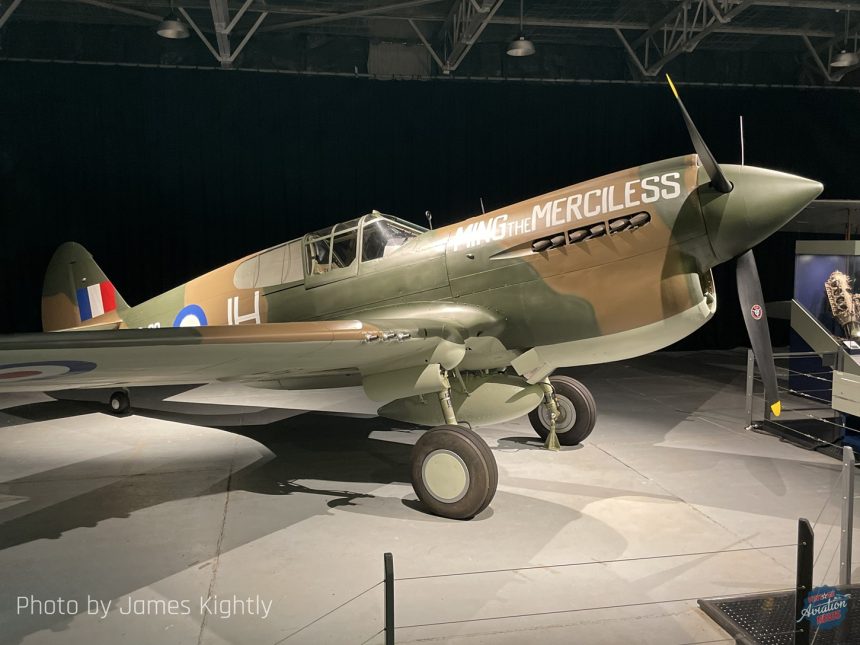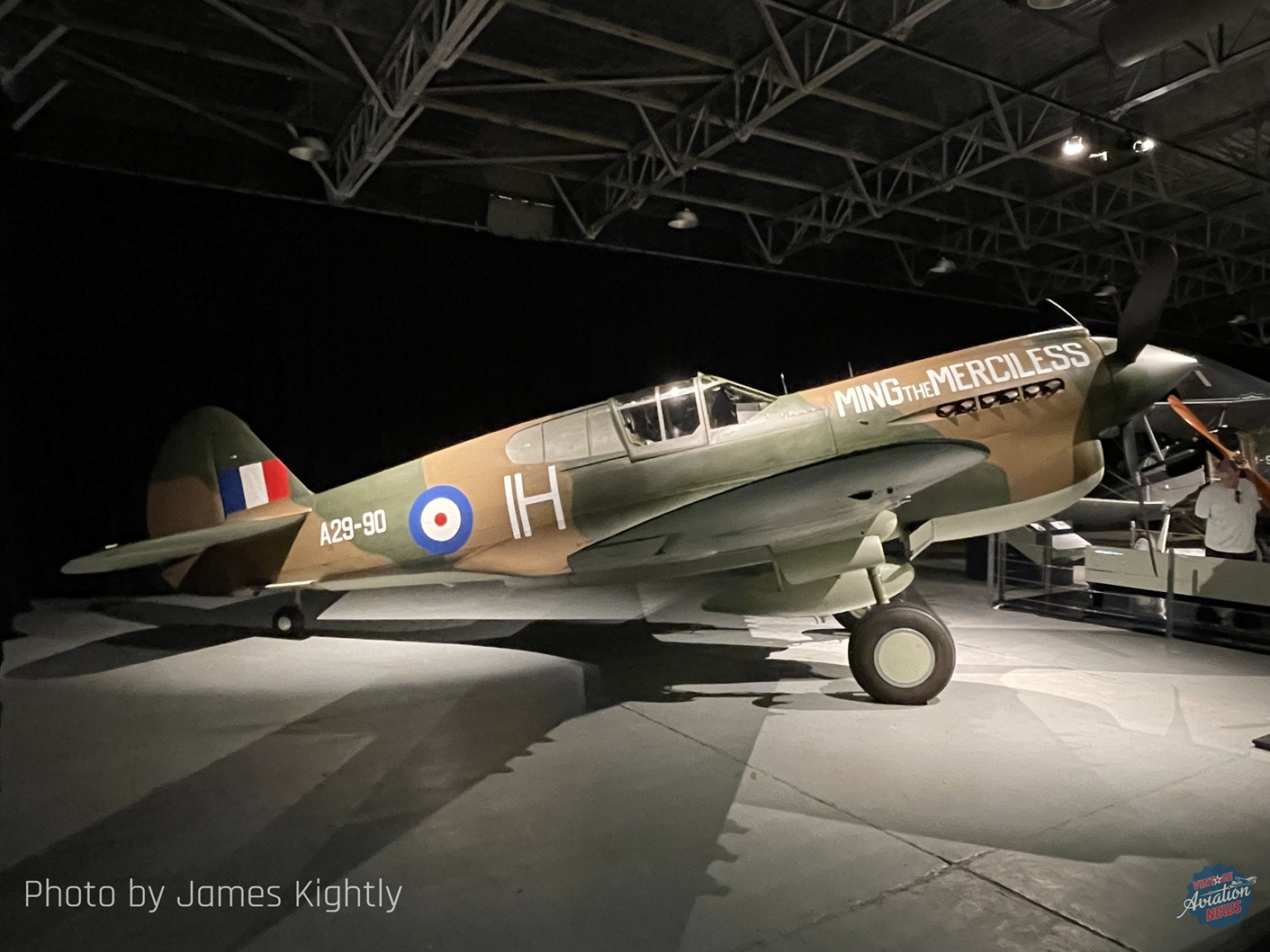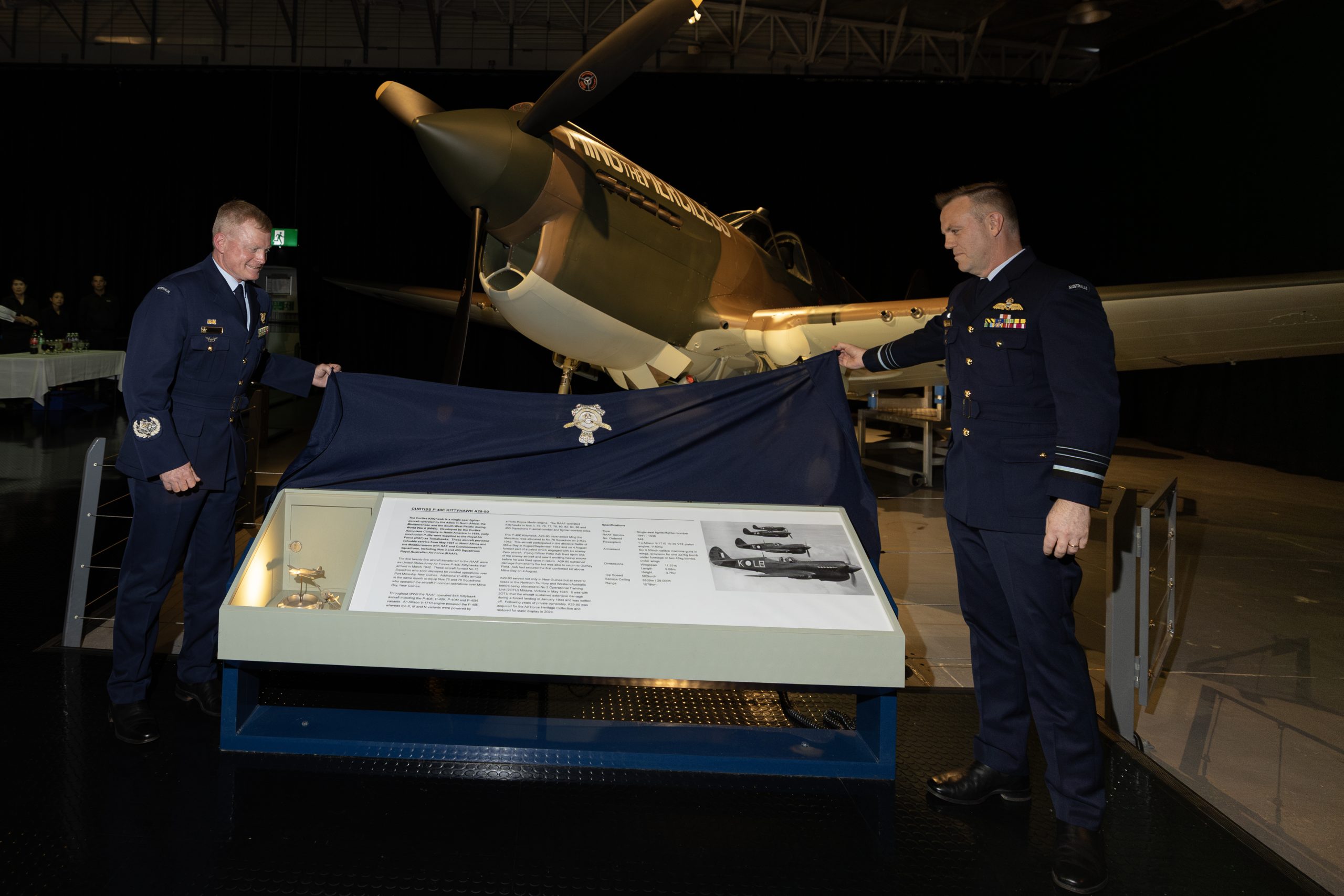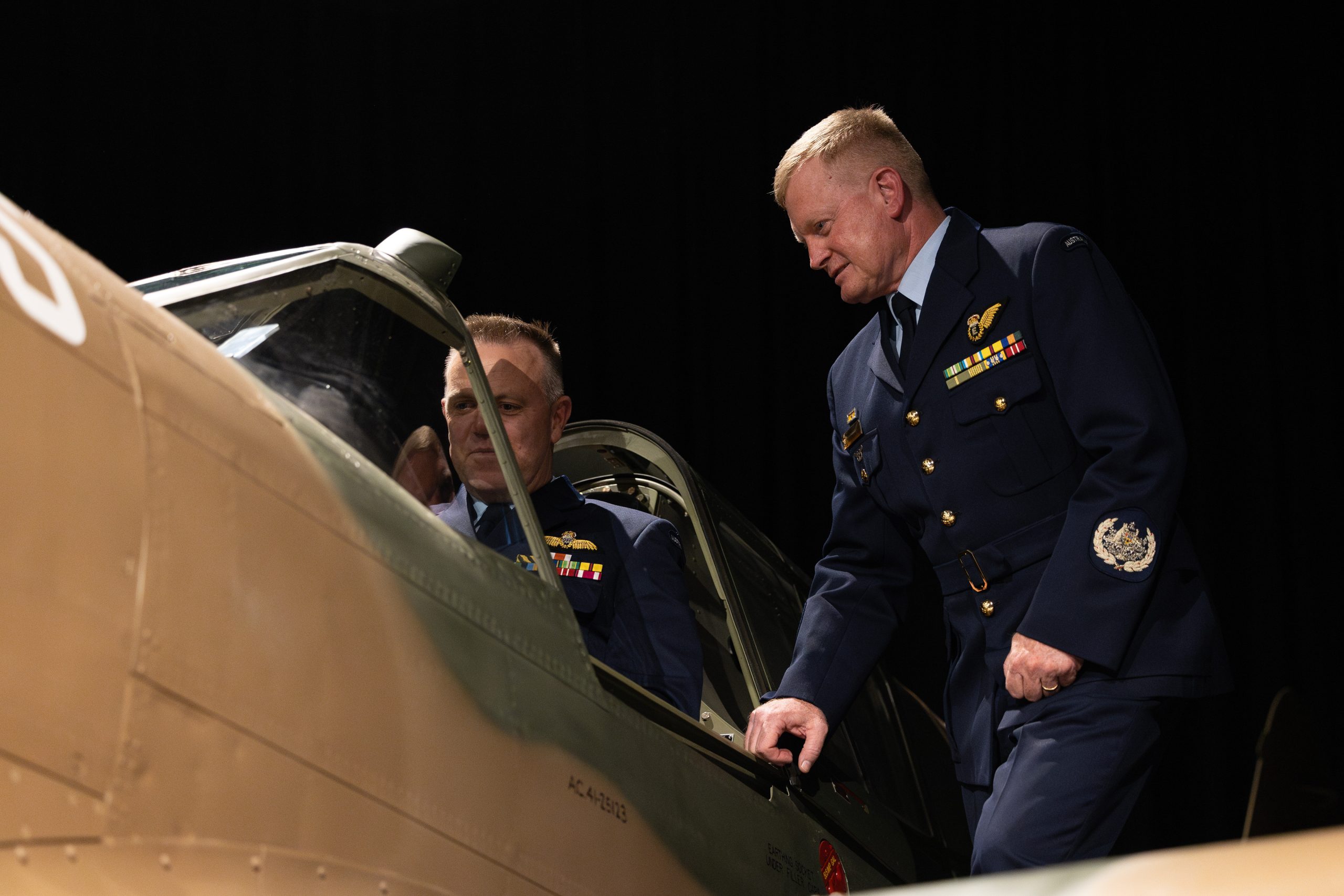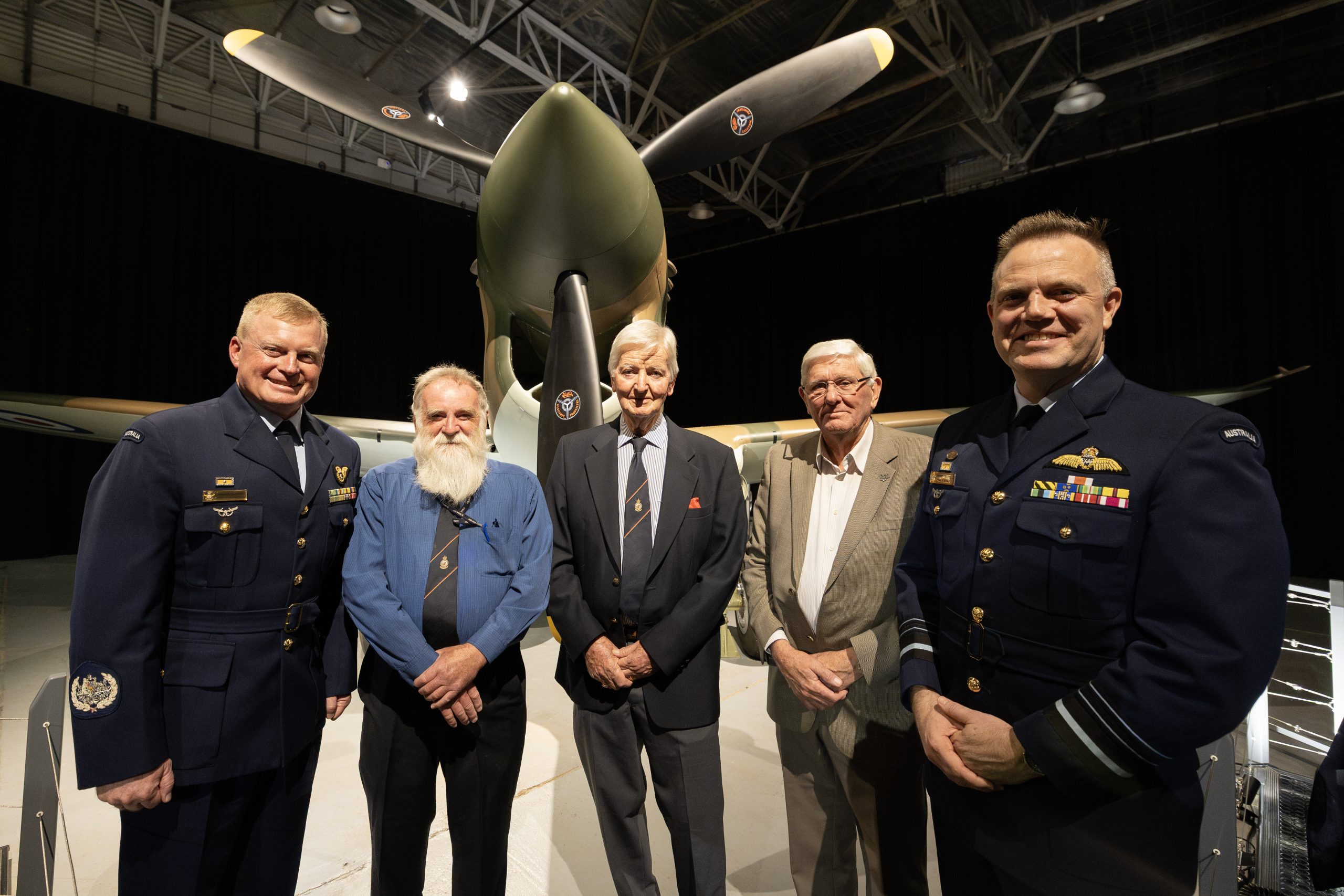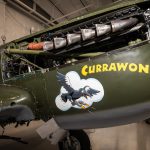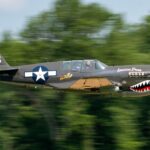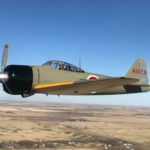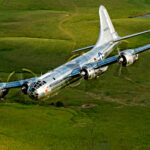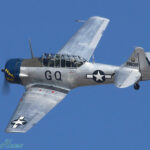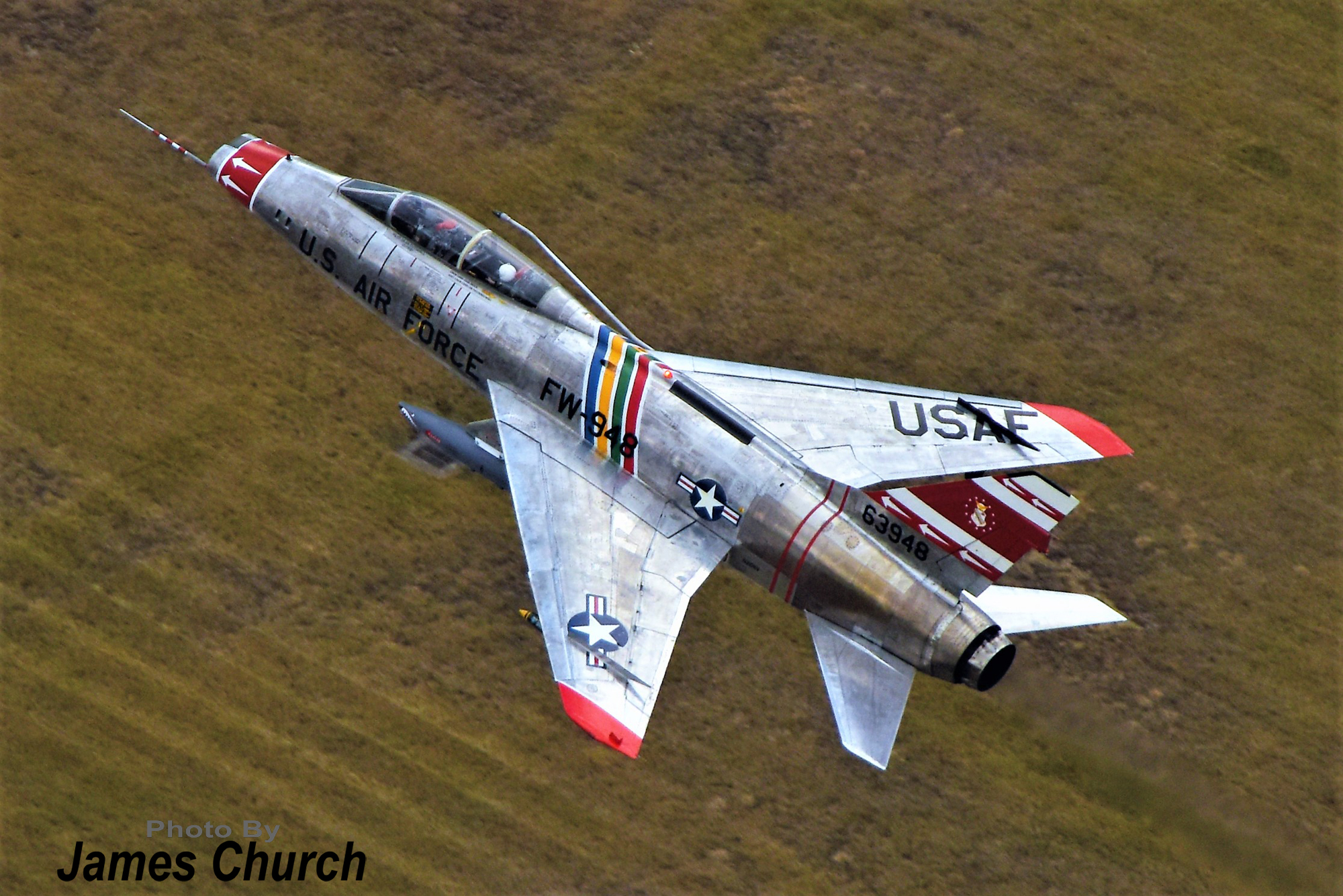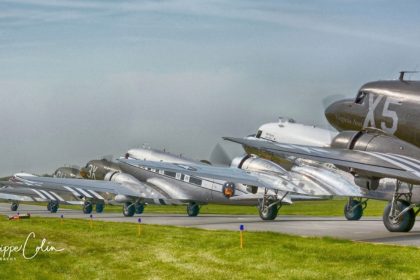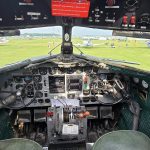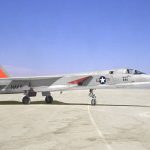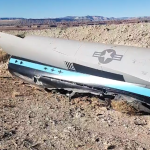At the Royal Australian Air Force Museum, Victoria, a historic, fully restored Curtiss P-40E Kittyhawk, serial number A29-90, was unveiled on March 23 2025. The rare aircraft, with a notable combat history, was put on show just before the 2025 Avalon Airshow. The fighter was presented by the Chief of Air Force, Air Marshal Stephen Chappell, DSC, CSC, OAM, and Warrant Office of the Air Force Ralph Clifton, among several VIPs. The RAAF Museum is at RAAF Base Point Cook, the birthplace of military aviation in Australia and home to more than 100 years of years of Air Force history.
Air Marshal Chappell said the aircraft is important for “…preserving the stories of the men who crewed this Kittyhawk, as well as the stories of the men who crewed the more-than 840 Kittyhawks operated by the RAAF during the Second World War.” Australians flew Kittyhawks in North Africa, Italy, and across the Pacific, and, in the defensive stages of WWII it was a critical fighter type, stemming the attacks of the Italians, Germans, and Japanese until the tide was turned. Finally having an example on show at the nation’s air force museum fills a major gap in the collection.
Acquired by the RAAF Museum in 1996, from then-owner Syd MacDonald, the remnant centre section and fuselage was bought on the understanding the aircraft was A29-28. However, dedicated research by RAAF Kittyhawk expert Craig “Buzz” Busby with support from Gordon Birkett and others, convinced the RAAF Heritage Section in 2022 that it was, in fact, A29-90, due to the Frame Five number being 908, identifying a P-40E-1, while the earlier P-40E type’s numbers only went up to 840.
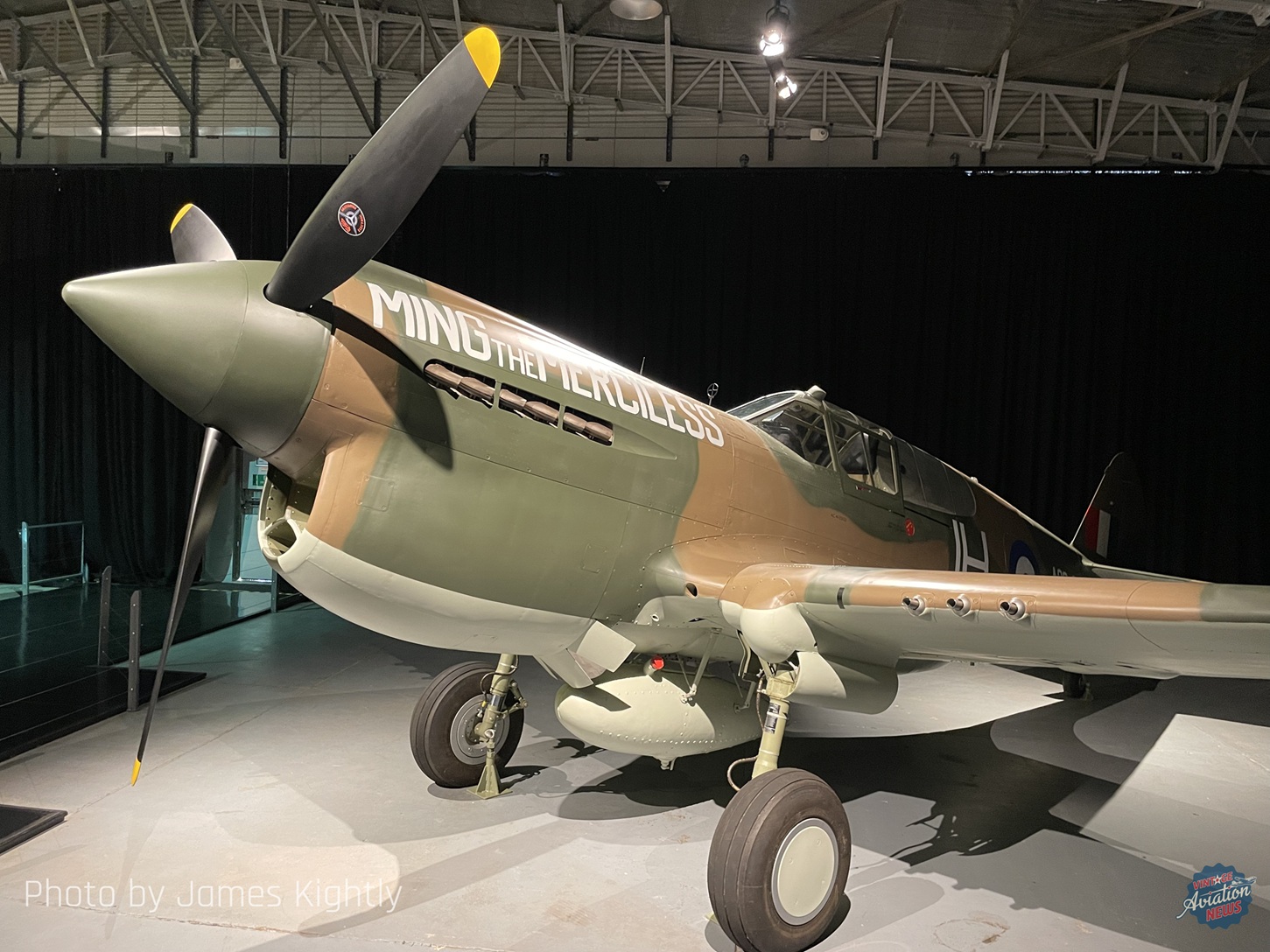
A29-90 has a significant combat history, being flown by Flying Officer Peter Ash during the Battle of Milne Bay, New Guinea, in August and September of 1942, and being credited with 76 Squadron RAAF’s first ever kill, on August 4, 1942. As part of a six aircraft flight on an interception patrol above the new airstrip hacked from the jungle and named Gurney Field, Milne Bay, Ash engaged two enemy aircraft in a stern attack. Identified with fixed undercarriages as Aichi D3A ‘Val’ dive bombers, with four Mitsubishi Zeros fighters as escort. Ash fired 500-600 rounds and saw the aircraft he was firing upon emitting heavy smoke, while enemy fighters hit his port elevator, starboard and port wing, and port fuselage. He broke off due to a ‘temporary engine failure’ and landed safely at Gurney Strip. Initially recorded with two kills, the first for the newly formed 76 Squadron, they were later adjusted to a single Kate in the official records, as well as two of the Zeros having been claimed shortly afterwards as well. This aggressive reaction helped to discourage further Japanese raids for some days. The Battle of Milne Bay was the first major battle of the Pacific war in which Allied troops, predominately Australian, decisively defeated Japanese land forces.
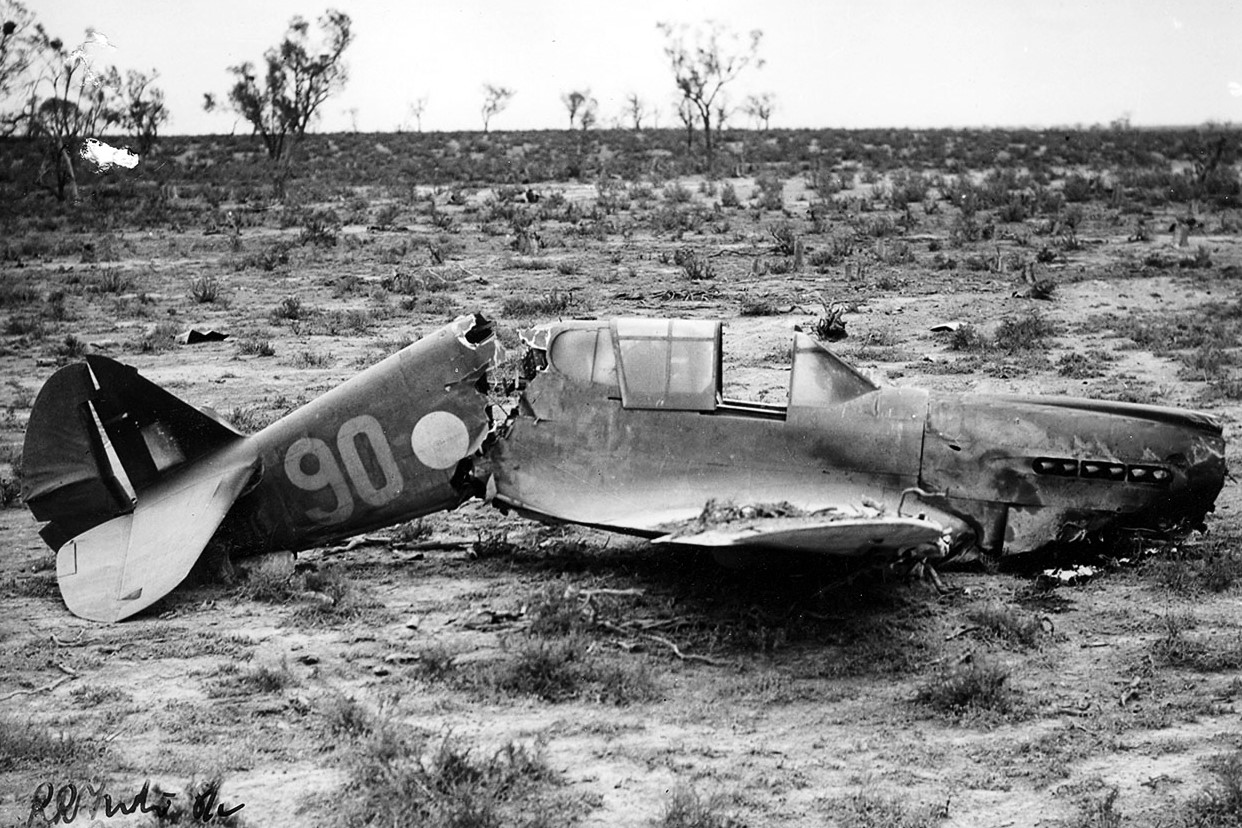
Originally built in New York by Curtiss Aircraft as a P-40E-1, with the USAAF serial 41-25123, it was supplied for Australian use by sea, and issued to the newly-formed 76 Squadron RAAF on May 4 1942 with the RAAF Serial A29-90. During May 1942, it was mostly flown by the British Squadron Leader Richard Edgar Brooker RAF, then the commanding officer and the aircraft had been named Ming the Merciless on the starboard cowling. “Ming” was the arch enemy of Flash Gordon, a very popular newspaper strip cartoon of the era.
After the notable combat history recounted previously, on August 11 1942, following engine damage in combat, the brakes jammed on landing, causing the undercarriage to collapse and damaging the propeller, though Pilot Officer Henry Alexander Kerr was not injured. Returned to Australia and repaired, it was heavily used for training with occasional minor accidents. On January 4, 1944, while returning from a ground strafing exercise, Flight Sergeant Gerald Sayce lost formation and eventually crashed during an attempted forced landing some 12 miles northwest of Mildura, Victoria. Sadly Sayce died of injuries at the Base Hospital.
The centre section was discovered years later and went on display at the since-closed Warbirds Air Museum in Mildura in 1968, being bought by Syd MacDonald in 1988. Restoration was started in 2012 after the RAAF Museum’s 1996 acquisition of the aircraft, with the vast majority of the work being undertaken by Precision Automotive of Wangaratta, Victoria, and the presumed identity A29-28 being changed, on the correct assessment of the remnant airframe identity, to A29-90. Restoration was undertaken to airworthy condition and with the engine ground run, but the completion was interrupted by the advent of the COVID pandemic, and policy changes with the RAAF heritage organisation reallocated the aircraft for static display only, in Curtiss factory scheme and still with the early Pacific war “red dot” roundels. The aircraft can be viewed at the RAAF Museum. Booking is required in advance though the website, although entry is free.
Air Marshal Chappell said on the unveiling of A29-90: “In welcoming our international guests here to the Australian International Airshow 2025, I am honoured that you are among the first to see the restoration of A29-90 – a significant piece of Australian military aviation history.”








